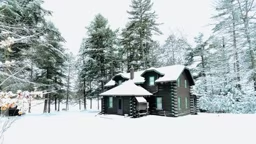1. Green, Greener & Greenest
To start, analyze your motivation for building a green home. Are you seeking a financial or an emotional return on investment? Jeremy Bonin, principal architect at Davis Frame in Claremont, New Hampshire, advises clients to prioritize what's important to them.Cost: Time to ponder, plan and prioritize.
Expected Savings: Peace of mind—as in, no thoughts of "I wish I would have…"
2. Green Positioning
Assuming your construction site isn't at the bottom of a canyon or in northern latitudes, orienting your home to benefit from passive solar gain can save you up to 40 percent on heating and cooling costs, says consultant Jerry Yudelson, author of three books on green building.Cost: Free
Expected Savings: $450 or more a year
3. Downsize Your Dream
If you're looking to reduce costs, simply reduce the square footage of the home, says Sarah Susanka, architect and author of The Not So Big House series and Home By Design. With some careful planning, you can easily reduce your square-footage needs by a third when compared to what you thought you needed.Cost: Time spent trimming your design
Expected Savings: $250,000, based on $250-per-square-foot cost
4. Incorporate Built-ins
Built-ins—such as bookshelves, closet shelving, cabinetry and window seating—can reduce the amount of square footage that would otherwise be given over to furniture to store your stuff, says Sarah Susanka.5. Tighten up That Envelope
Most conventional homes perform as if a window has been left open year-round. You can change this by opting for increased insulation in your new home, which can reduce heating costs by up to 50 percent and eliminate the need for air conditioning in some latitudes, advises Sarah Susanka.Cost: About a 2 to 5 percent upgrade in insulation and labor costs
Expected Savings: Return on investment in roughly five to seven years
6. A Breath of Fresh Air
Healthy indoor air is a key component of green building. Invest in a mechanical system, called an air-to-air heat exchanger, to exhaust stale air and replace it with fresh air, advises Jerry Yudelson.Cost: $1,000
Expected Savings: No doctor's visits for asthma or allergy issues
Click here for more ways to improve your indoor air quality!
7. Here Comes the Sun
Studies prove we are happier and healthier when exposed to daylight, says Jeremy with Davis Frame, which is why you should design your home to let in plenty of natural light.Cost: Minimal if you incorporate it into the design process
Expected Savings: No need for lights during the daytime
8. The Heat Is On
The more you spend on your heat-delivery system, the more comfortable, energy efficient and healthy your home will be, say the experts interviewed for this story. The most expensive: hot-water radiant heat in floors or walls. The least expensive: natural gas forced-air systems. Hot-water baseboard radiators fall somewhere in between, as far as cost is concerned. Regarding the furnace itself, geothermal heat pumps earn high marks for being the greenest.Cost: Radiant heat, $2 to $5 per square foot installed; geothermal heat pumps, a 33-percent increase over forced-air furnaces
Expected Savings: Radiant heat is 40 percent more efficient; geothermal heat pumps are 40 to 60 percent more efficient.
9. That New House Smell
Tile and hardwood will cost about $5 to $10 more per square foot than carpet; low VOC paints will cost anywhere from $2 to $10 more a gallon.Cost: Minimal if you incorporate it into the design process
Expected Savings: Healthier indoor air
10. Specify Green Products/Applicances
To reduce operating costs, opt for Energy Star-rated appliances, electrical and plumbing fixtures. Consult the book Green Building Products: The GreenSpec Guide to Residential Building Materials for a comprehensive listing of options.Cost: Varies based on appliance
Expected Savings: Return on investment anywhere from five to 15 years






_11868_2023-04-27_10-18-256x288.avif)




